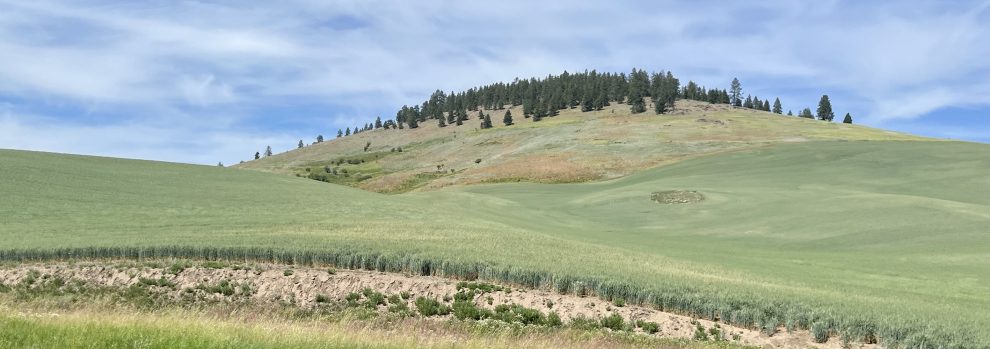 I will do my best to avoid scolding all of us for a history that is past and cannot be changed. As heard anecdotally, we should learn from our history, to avoid the same mistakes. “Those who do not remember the past are condemned to repeat it” George Santayana.
I will do my best to avoid scolding all of us for a history that is past and cannot be changed. As heard anecdotally, we should learn from our history, to avoid the same mistakes. “Those who do not remember the past are condemned to repeat it” George Santayana.
During undergrad at Essex Community College I attended a wonderful class called the Sacred Art of Indigenous Cultures, taught concurrently by two instructors. Each was equally intelligent and credible, but they often contradicted each other emphasizing that study of history, fossil or fragmented remains, and artworks leaves something to the individual to interpret. Interpretations change from person to person and from time to time. Kind of reminds me that when I was a kid, the Indian was a fierce savage and the Cowboy was clearly portrayed as the good guy. Later, we seem to deify the indian and wish we could live in half their harmony. Even that 1971 “Crying Indian” commercial with Native American in the canoe paddling through an industrialized river with a tear in his eye sits heavy on my memory…Maybe thats part of why I still don’t litter?
We, of course, were all curious about this museum. Horses, arrows, pottery, tepees, buffalo, turquoise, harmony, feathers and all. Yes, there must be beautiful sights for us to see. The Museum too tries not to scold us. The town of Cherokee seems to broadcast two messages: 1)Transformation Through Forgiveness and 2)Unity! WOW. Gandhi right here in America. Like Martin Luther King – peace under violent oppression. All of the most admirable traits of religion and philosophy lead this way.
 There is a traveling Cherokee sculpture to spread the message of forgiveness.
There is a traveling Cherokee sculpture to spread the message of forgiveness.
 Even the rail-trail graffiti was encouraging.
Even the rail-trail graffiti was encouraging.
 The museum was informative and led us through exhibits following a timeline.
The museum was informative and led us through exhibits following a timeline.
The Paleo period 13,000-10,000 years ago showed the stone tools and spears of earliest Americans, Cherokee ancestors.
The Archaic and Mississippian periods from 10,000 to merely 500 years ago saw improvements in climate, leading to easier hunting, agriculture and “more free time” allowing the beauty of daily tools, pottery, baskets and adornment. Much of our impression of the Cherokee, of course is “post-contact” as we could only chronicle what our culture was there to see. Square foundation houses, meeting halls, sweat lodges look like any pioneer period you’d expect.
Of course the trend accelerated by about 1540. Settlers poured in faster than they could forge a life of their own. De Soto brought Spanish explorers in search of gold and riches, but brought disease and decimation also. Despite an open-hearted welcome, coexistence was not to be. In 1762 as emissaries of peace, Chief Ostenaco went with several other Cherokee leaders to England to meet King George III and declared mutual peace along with allegiance to the King. A proclamation was sent back to British settlers to allow Cherokee to continue their ways unfettered.
Probably the real death knell was the American Revolution when this edict was repeatedly ignored as settlers demanded land and moved into the best territories. Against the recommendations of statesmen such as Henry Clay, Daniel Webster, Davy Crockett the government enacted the Indian Removal Act of 1830. By 1838 the U.S. forcibly exiled the remaining Eastern Band of the Cherokee.
Approximately 16,000 Cherokees were moved into pathetic stockades in groups of 1,000 beginning in the spring of 1837 and continuing throughout the fall the following year. Under the command of General Winfield Scott, the Cherokee were driven west by 7,000 soldiers and volunteers. Some in covered wagons, but most walking with little more than shared blankets as their only protection. An estimated 4,000 Cherokee Indians died during the almost 200-day “Trail of Tears” by disease, malnutrition and exposure. They were afforded no privacy, no sanitation, meager food, and slept in groups on the ground between daily forced marches.
Over 30 treaties were inflicted on the people from 1684 to 1835. A final deal of $5 million in compensation and 13 million acres in what is now Oklahoma was closed by Andrew Jackson despite admitting an Indian saved his life once, as he signed the final removal papers.
We are familiar with other reservation photographic policies from powwows and previous travels. Out of respect we took no pictures inside the Museum, If you would like to see them, everything is available on their website.
Before we went in, Jane and I hung our heads down half jokingly. But, near the end of my tour, I cried. It seemed like a good deep cry, I wasn’t really witness to the indignities but empathize. I think I am MOST relieved to see the town’s peaceful messages as direction for the rest of the world.
– David



Thanks for sharing this and your feelings of which many folks very much agree with. I have a naturalist friend who wrote a book about the white man’s awful, awful treatment of native americans. It’s on my must-read list: http://www.amazon.com/The-First-Frontier-Forgotten-Endurance/dp/0151015155/ref=sr_1_1?ie=UTF8&qid=1353485519&sr=8-1&keywords=scott+weidensaul
Thanks for the link, Jill. Sounds like something we should read especially since we’ll be going out West where the poor treatment of Native Americans is even more evident.
– Jane
Pingback: DAY 163 2/20/2013 A Navajo Welcome | The Voyage of the Tramper